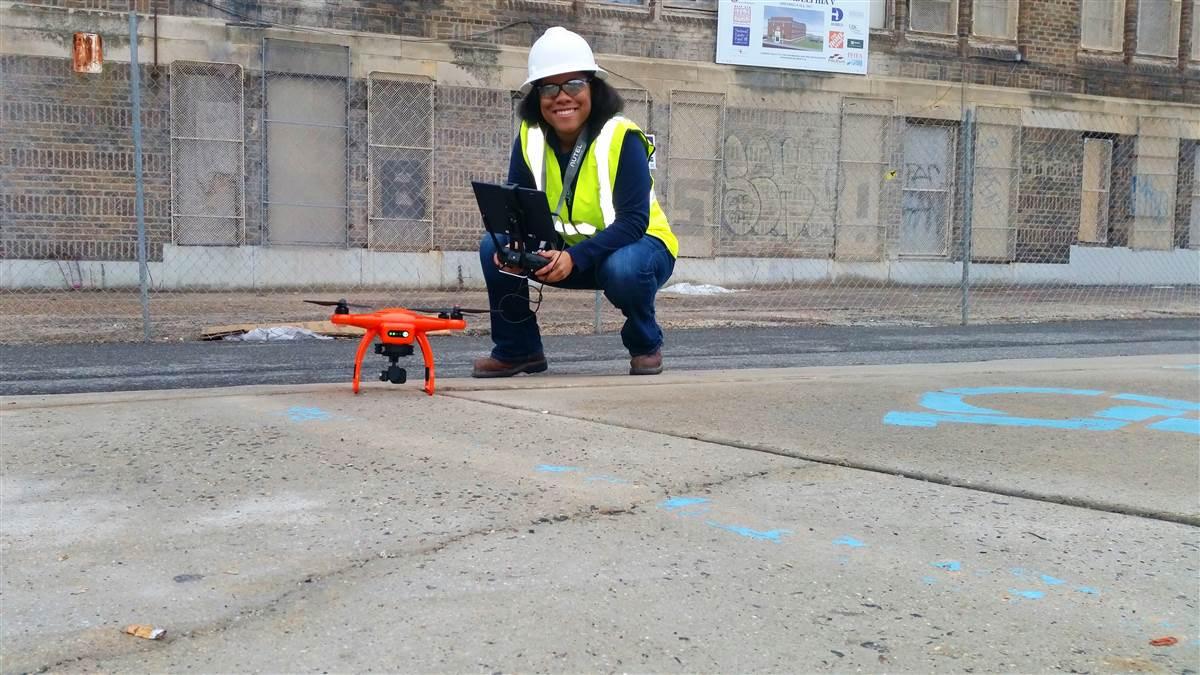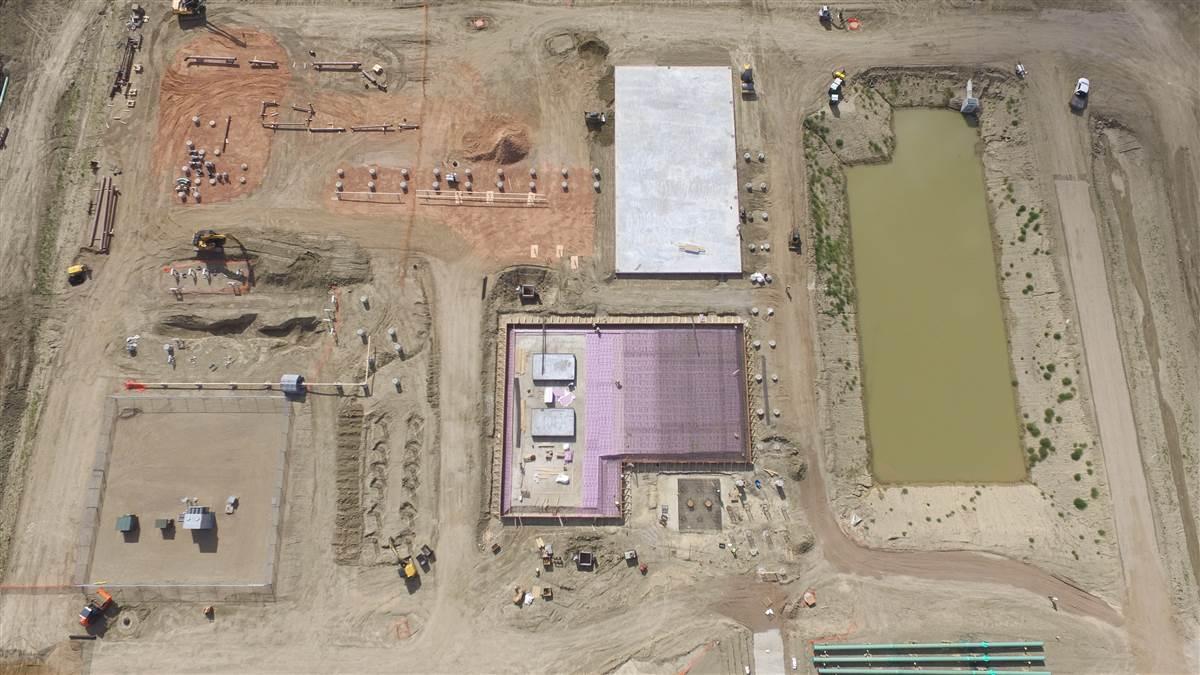Drones: Construction engineer builds drone business
‘Sky Ninja’ helps others, too

Mitcham had little knowledge about aviation (manned or unmanned) before someone suggested in 2015 that drones might be worth looking into.
“They wanted to be able to see what’s going on from day to day at the construction site,” Mitcham said, adding that the only alternative at the time was to hire an airplane for monthly photo missions that would cost thousands of dollars each. That was also around the time, she said, when the FAA had started “getting more serious” about allowing drones to fly for commercial purposes.
“I said ‘Let’s start with one—experiment, see how it goes,’” Mitcham said. “I’ll drive around all the sites, we’ll get some pictures. They said, ‘No, let’s get six. One at each site—and you’re going to teach everybody how to fly.’”
This led Mitcham to general aviation, and she “went as far as my first solo in a Cessna.” (The FAA required manned pilot certification for most operators prior to the advent of Part 107.) Mitcham said the experiment with drones monitoring construction activity was a resounding success, although her company interrupted her aviation career with a transfer to Philadelphia, where controlled airspace kept drones grounded.
 Mitcham decided to quit her job and Sky Ninja was born. The company focuses on the core functions where a drone fits into the construction industry: aerial photography and videography to keep stakeholders up to speed; linear and volumetric measurement (such as cut and fills); and visual and thermal inspections of equipment in hard-to-reach places.
Mitcham decided to quit her job and Sky Ninja was born. The company focuses on the core functions where a drone fits into the construction industry: aerial photography and videography to keep stakeholders up to speed; linear and volumetric measurement (such as cut and fills); and visual and thermal inspections of equipment in hard-to-reach places.
“A lot of times when I’m talking about what I do, I leave the drone out of the equation and bring it in at the end,” Mitcham said. She focuses on the benefits that drones deliver, including the capability to gather information that can increase efficiency, make projects more profitable, and even help settle contract disputes.
Mitcham said one secret of success is to focus on a particular niche and develop expertise clients need. Knowing the construction industry from the inside has helped her, but much of what a pilot with a drone business would need to know can be found online, or by talking to people who work in the industry. “There’s so much information out there,” Mitcham said. She encourages drone pilots to pay attention to the challenges that an industry faces and find the opportunities there. “Get out there and start talking to people, out of the context of the drone.”
And while drones are rapidly gaining popularity among those who build and maintain everything from pipelines to office towers, there remain many potential clients who probably have little idea about the potential benefits that will increase as technology advances in the future. Mitcham will be competing for those jobs, too, but she’s happy to help others succeed as well.
Web: https://skyninja.co



